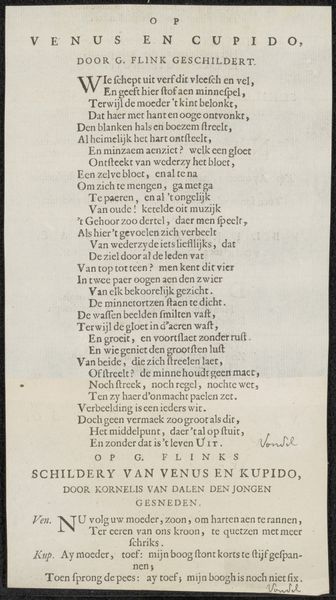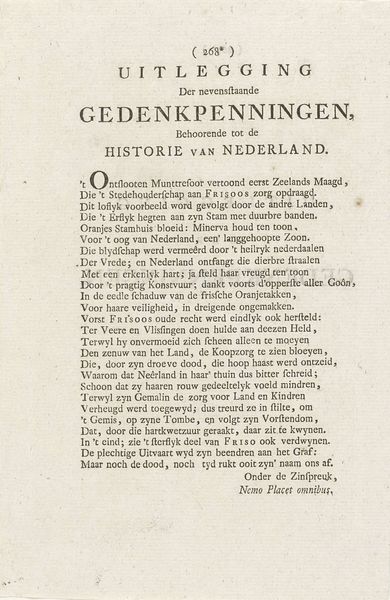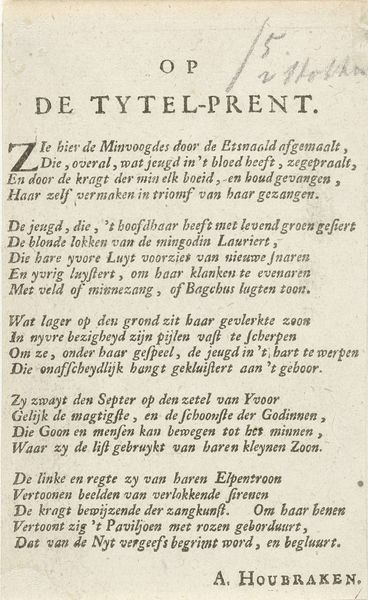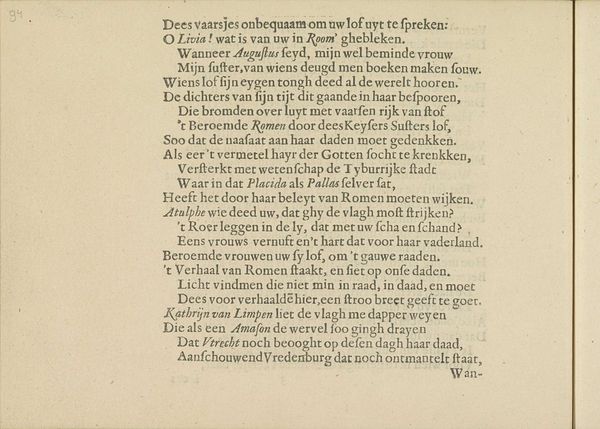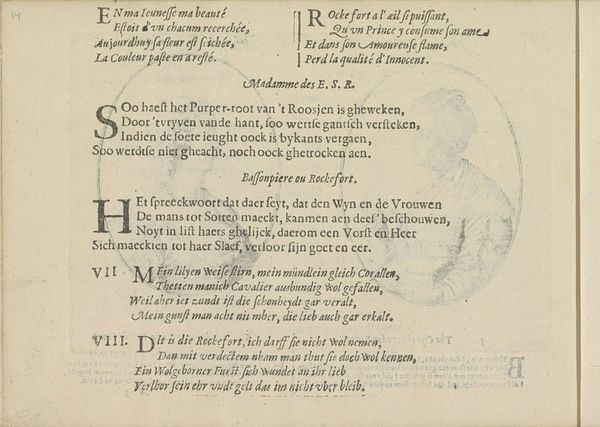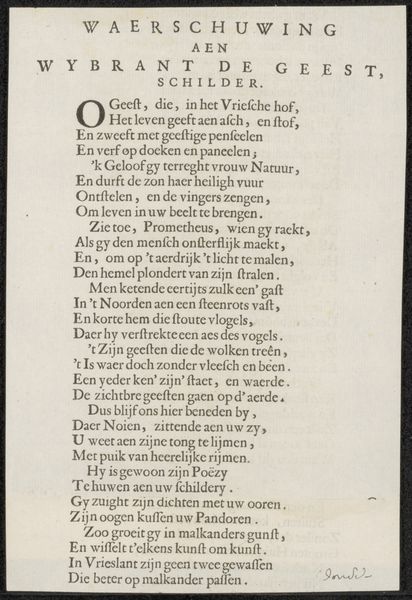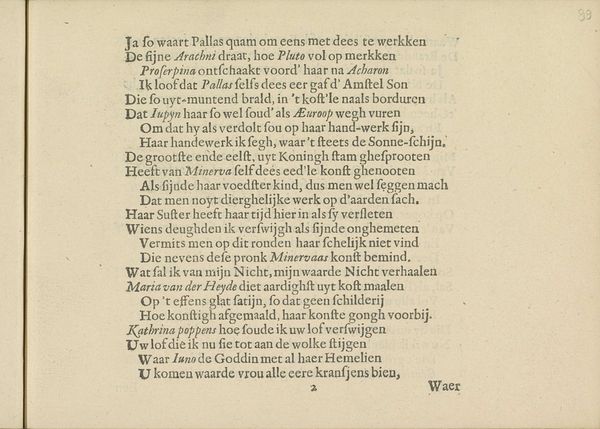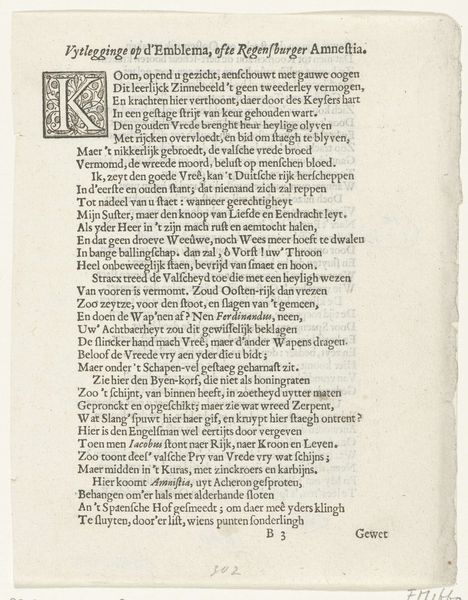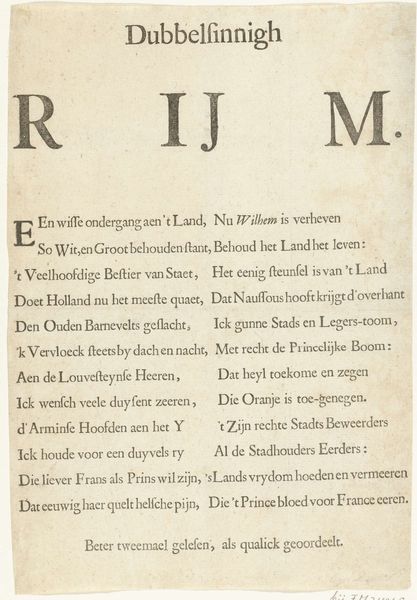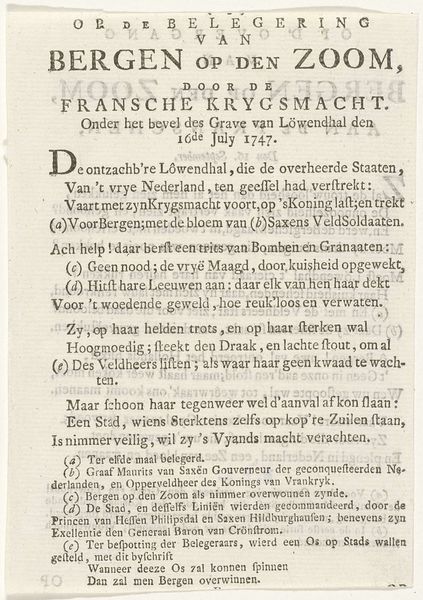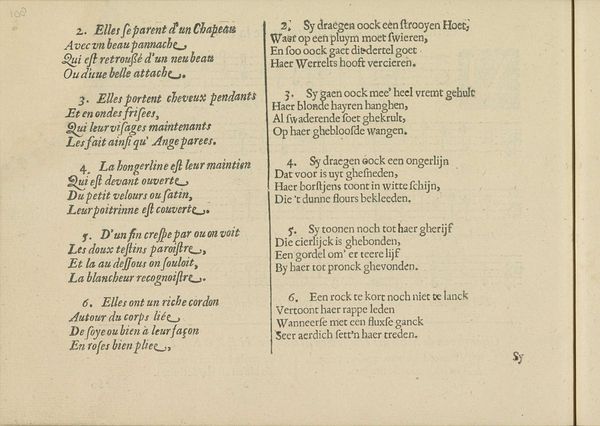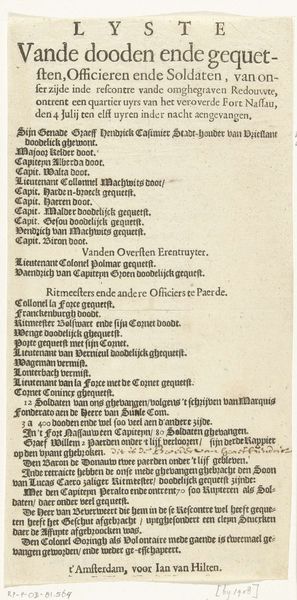
Tekstblad bij de prent van Frederik Hendrik die in een triomfwagen Den Haag binnen rijdt, 1629 1700 - 1721
0:00
0:00
graphic-art, print, typography, engraving
#
graphic-art
#
script typography
#
hand-lettering
#
dutch-golden-age
# print
#
hand drawn type
#
hand lettering
#
text
#
typography
#
hand-drawn typeface
#
fading type
#
stylized text
#
thick font
#
handwritten font
#
engraving
#
small lettering
Dimensions: height 82 mm, width 100 mm
Copyright: Rijks Museum: Open Domain
Curator: This striking typographical print is called "Tekstblad bij de prent van Frederik Hendrik die in een triomfwagen Den Haag binnen rijdt, 1629." It dates from around 1700-1721 and it's currently held at the Rijksmuseum. What impressions do you get from it? Editor: My first thought is—intense. It feels dense, almost claustrophobic, with all that tight, controlled text pressing in. The typeface, it's beautiful, but it demands attention, almost like a proclamation. Curator: Absolutely. This work is significant because it's a commentary penned by Joost van den Vondel, one of the Dutch Golden Age's most important writers. Vondel questions why advocate Oldenbarnevelt is placed above 's Hertogenbosch’s triumph in print. Consider the power dynamics at play during that time and what it meant to challenge authority in such a direct manner. Editor: Ah, Vondel! Of course, a master of biting critique served with poetic flair. So, it's not just decorative text; it’s a deliberate intervention, questioning the establishment. I love the immediacy of "gaf op staande voet dit antwoordt"—like he couldn’t wait to put his thoughts to paper. It brings to mind, almost, a rebellious streak from an earlier age. Curator: Exactly. Vondel consistently challenged norms. And given that this piece engages directly with a triumphant depiction of Frederik Hendrik, it inserts itself into discussions of power, religion, and justice—crucial elements in understanding the socio-political climate. The Contra-Remonstrant perspective adds yet another layer of interpretation to the history it captures. Editor: You're right, understanding who’s speaking—or writing—is key. Thinking of today, it’s a bit like a supercharged blog post reacting to some major political event, rendered in exquisite calligraphy! This blend of ephemeral commentary with durable artistry is something to savor. Curator: It does prompt us to rethink the nature of dissent and how historical perspectives intersect with current discourse. Appreciating works like this encourages us to ask pressing questions about art and accountability. Editor: Indeed. And for me, it’s a wonderful reminder that even the smallest printed word can hold universes of meaning and be a revolutionary act in disguise.
Comments
No comments
Be the first to comment and join the conversation on the ultimate creative platform.
